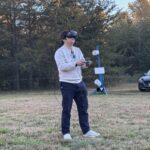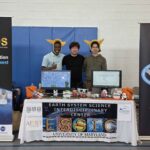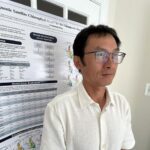COLLEGE PARK, Md. – The Chesapeake Bay “runs through the blood” of waterman Ben Parks and his son, Ben Parks II (above). Generations of Parks have fished the bay; have lived off the bounty that it provided. But Ben Parks has also seen the changes – the health of the Chesapeake has been declining for decades – and his family’s ability to make a living on its waters has declined as well.
Pollution, disease, climate change, hurricanes, the impact of a growing number of humans living around the Chesapeake have all played a part. Parks said he knows that “five years from now, most of your older watermen are going to be gone,” adding “it’s our responsibility to protect this for the younger generation that’s coming along and I think they’re going to have to completely change the way they’re doing business to stay in business.”
The University of Maryland – and University System of Maryland – have been working since the early 1920s to understand what makes the Chesapeake Bay so unique and to find solutions to its many problems.
Research being conducted by ESSIC – the Earth System Science Interdisciplinary Center at Maryland’s M-Square Research Park – could provide one part of the answer: a way to provide critical long-term environmental information. “The Chesapeake Bay is really a microcosm of the earth’s system for a variety of reasons,” said ESSIC Director Tony Busalacchi. “We have the influence of the bay itself, the atmosphere, the land, the terrestrial eco-system.”
ESSIC’s Chesapeake Bay Forecasting System (CBFS) is focused on research that looks at how all the earth’s environmental systems fit together – using data from NOAA, USGS, NASA and USDA as well as on-site sensors and satellite observations. Director Raghu Murtugudde said, “The CBFS has the potential to provide “Designer Forecasts” from days to decades as an interactive decision-support tool for everything from air and water quality to human health to smartgrowth.”
The CBFS has brought together a wide-range of state and federal officials, watermen, River Keepers and other stakeholders to create a team that can tailor the information into a usable form – to “bring the information down to a scale that matters,” said Busalacchi, “so society can make decisions.”
{arisexylightbox activeType=”rcontent” width=”75%” height=”75%” url=”http://essic.umd.edu/joom2/media/com_form2content/documents/c8/a379/f46/University of Maryland Research Brings Next Generation Forecasting for the Chesapeake Bay.pdf” link=”Download Attachment” title=”” }{/arisexylightbox}






